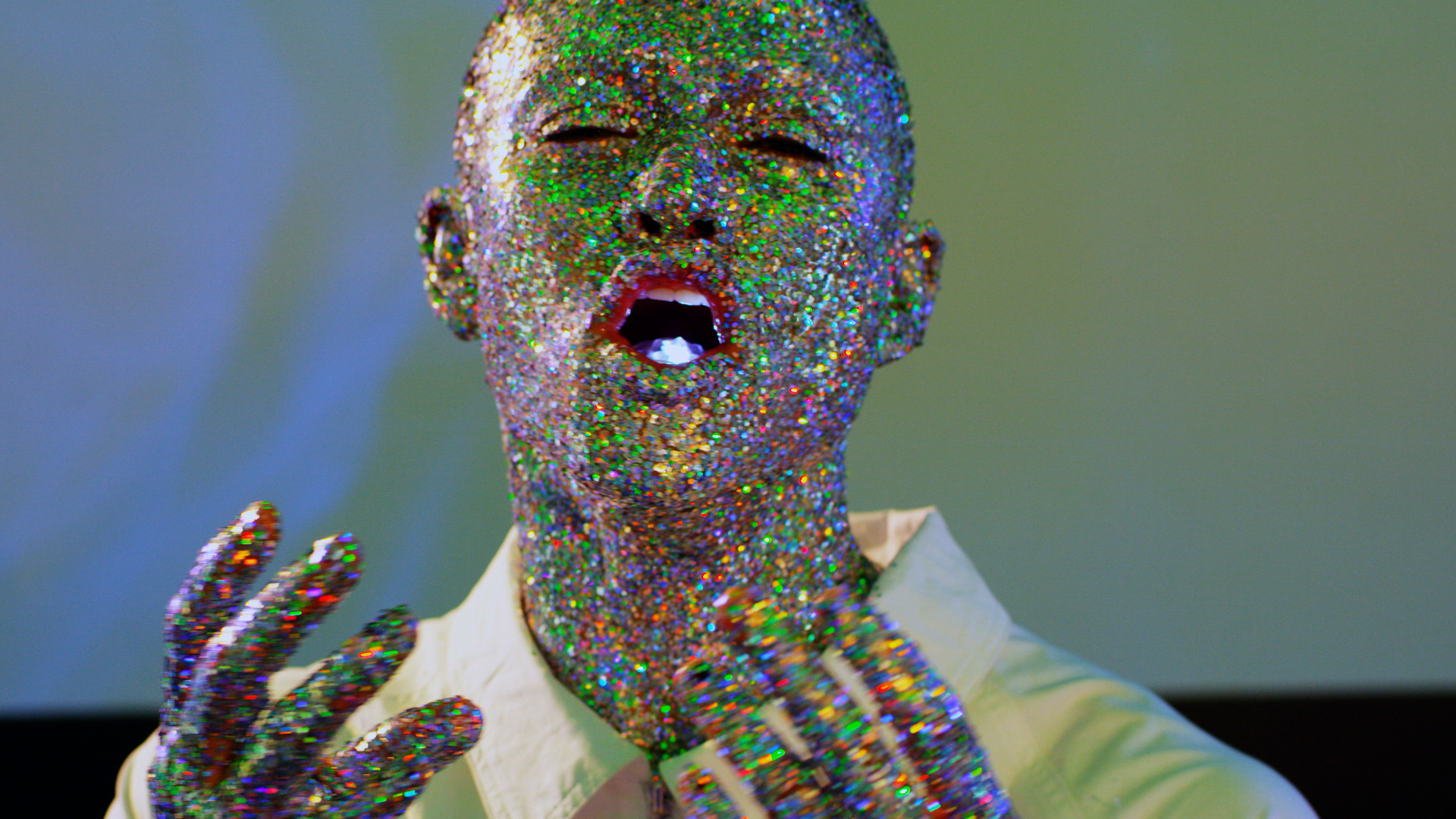
Free
Foundation
Terms of Use
March 9 → July 9, 2023
Terms of Use brings together works that explore the impact of technologies on the definition, construction, and (re)framing of individual and collective selves
In summer 2023, the PHI Foundation for Contemporary Art collaborated with Festival Quartiers Danses and its mediators Yule Burlefinger and Aude Lachapelle, offering guided dance visits to groups, which included dance artists Cara Roy and Kyra Jean Green. The co-hosted visits were part of the exhibition Terms of Use, which was displayed at the Foundation from March 9 to July 9, 2023. The exhibition explored identity, virtual connections and performance through the lens of technology. Read below, a first hand account of one of these unique and enriching dance visits.
Often, when we think of a guided tour of a contemporary art museum, we picture an educator imparting information to a number of participants and leading a discussion. Whether the educational model is conventional or progressive, our relationship to contemporary art remains one of distanced contemplation, often interpreted through intellect. We are hesitant to engage our bodies, our senses and our emotions, as these do not seem to lead to any real understanding of the art.
Art historian Claire Bishop invokes the idea of “euphoria of space” [1] to describe the feeling that takes over visitors the moment they enter the impressive architecture of art museums: this sensation of deference in relation to the monumentality of the architecture then takes center stage in a visitor's bodily experience, and their personal aesthetic relation to art is relegated to the background. The body therefore loses confidence in its abilities, and museum educators are perceived as the sole holders of knowledge about the works, perpetuating the pedagogical model of transmission from teacher to pupil.
At the PHI Foundation’s Education Department, we consider it crucial to value and encourage the movement of the body and affect during the group visit in order to make contemporary art more widely accessible. There's a political dimension to this—seeing the public as a holistic being, embracing their intellect, but also and equally their body, their emotions, and even their spirituality.
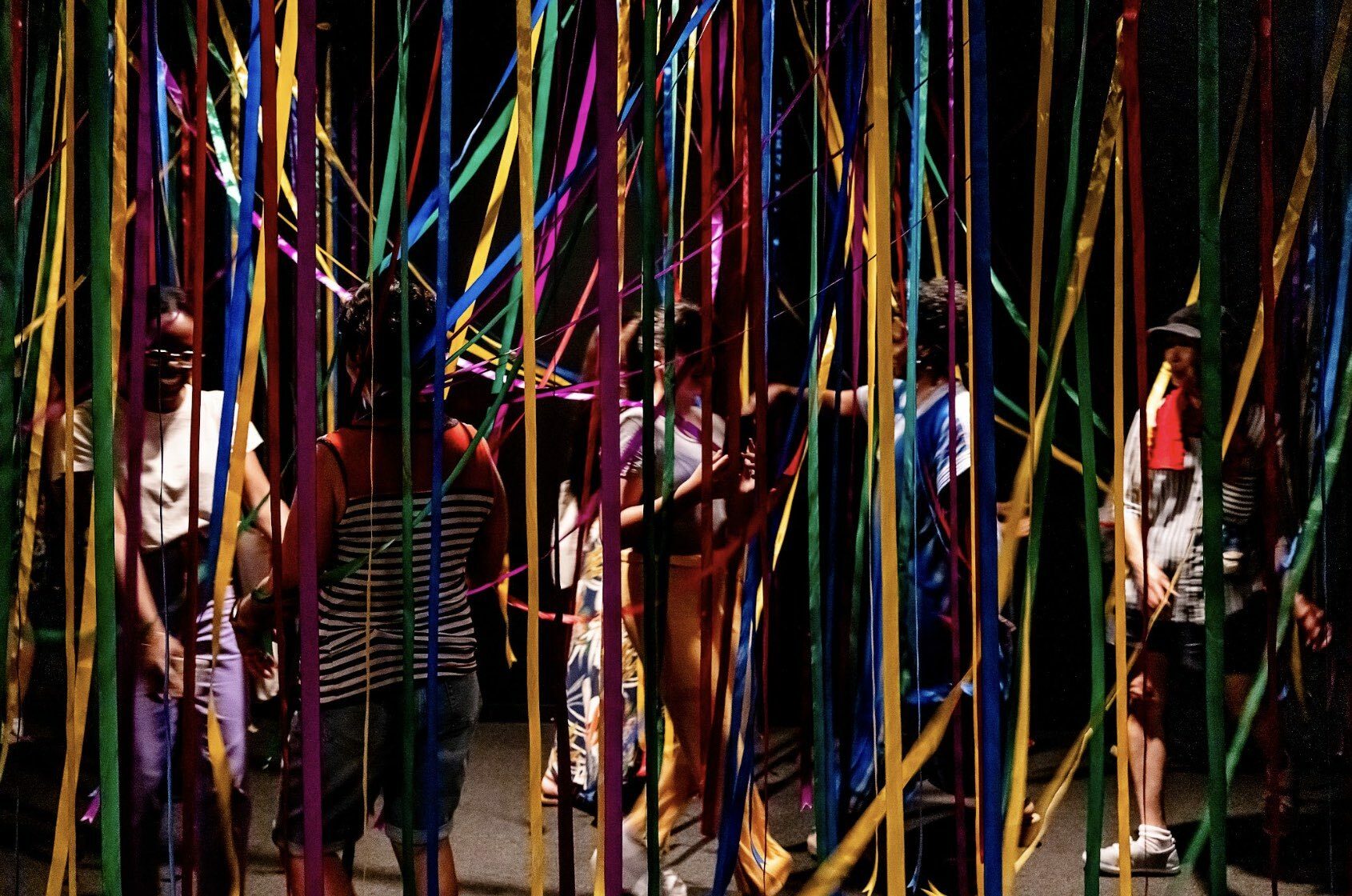
The dance visit of the Terms of Use exhibition begins with an exploration of the piece [Dé]faroucher (2019-2023) by artist VahMirè (Ludmila Steckelberg), with Cara. First, the group is invited to wander freely through the space, getting a feel for the place. The work, composed of videos, sculptures, virtual reality works and ribbon installations, represents the artist’s favourite places in Montréal. For the first interpretation, we reflect on the journey of the Montréal artist of Brazilian origin. Within her installation, the artist captures her ambiguous feelings towards different places in the city of Montréal: she feels at home, welcomed, but at the same time, excluded and isolated, both comfortable and uncomfortable. A discussion ensues around charged topics such as the sense of belonging in a host country and the places we occupy in different spheres of our lives. A section of Steckelberg’s work allows us to discover places that are symbolic for her, using photogrammetry. Sitting on the floor before a projection featuring different facets of the artist, we take a moment to return to our bodies, as Cara suggests a visualization exercise. With our eyes closed, we are transported to a favourite place, a space where we feel at ease, calm and serene. We are then guided by the dance artist, who suggests bodily movements to express our imaginations. At first, these movements are timid, but gradually the body becomes a malleable material that shapes itself, in the same way as the artwork.
A number of participants said they were touched by Steckelberg’s migratory journey, and report having already experienced this feeling of dislocation, this emotion of incompleteness and ambivalence when faced with a new place. Steckelberg’s work resonates with many of the realities of community groups who took part in our dance visits. Thanks to the exploration of intuitive gestures, reticence gradually gave way to open exchanges and sharing. One person tells us about a dream they have, that of visiting Mecca. Through this guided introspection, they realize they can travel through their thoughts and gain a certain agency over their goals, which feels especially satisfying. We conclude this part of the visit by walking through an installation of ribbons, an invitation to touch that puts participants at ease. The opportunity to touch, move and occupy the vast, amplified space of the gallery gives visitors the power to act, to understand and to legitimize their comprehension of the works and the tour.
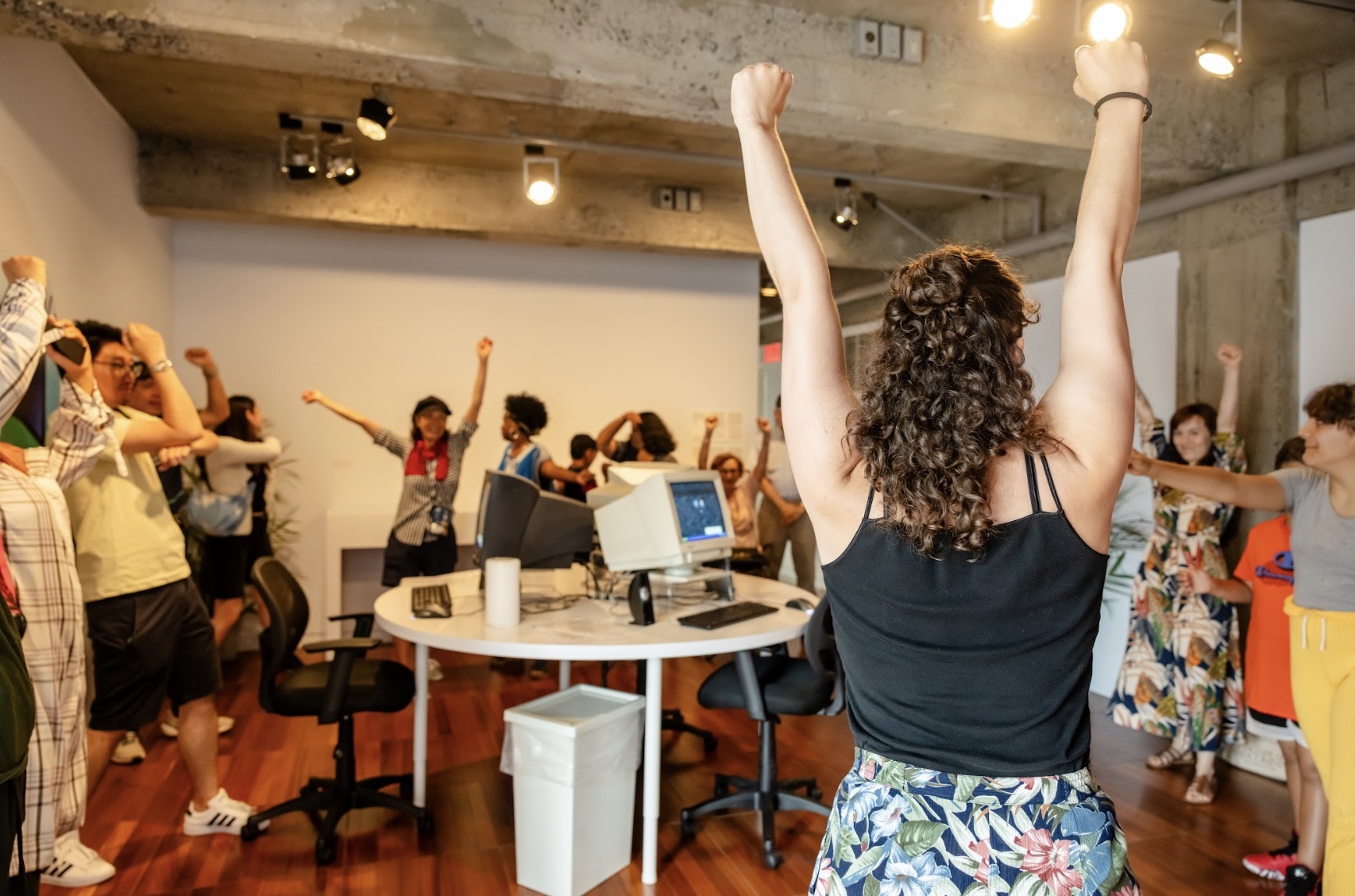
On the next floor, we take a moment to greet each other in front of installations by artists Skawennati and CyberPowWow, before continuing our visit towards the flagship piece Technology/Transformation: Wonder Woman (1978-1979) by American artist Dara Birnbaum. A pioneer of video art in the 70s, Birnbaum takes a critical, subversive look at canonical female representations disseminated by mainstream media, particularly television. Using repetition and video remixing, the artist reframes the familiar Wonder Woman character in a captive space. Through a process of visual echo and replay, Birnbaum dismantles normative definitions of the female gender. A movement-based reading of the work is then proposed to the group by Cara. Gathered in a circle, we in turn perform a series of repeated gestures around the theme of strength. In a moving chorus filled with amusement and bursts of laughter, participants describe this moment as an emancipatory space for releasing tension and letting go. The processional ritual of the museum is eradicated; dance visits enable guests to freely interpret the art. Participants are thus invited to make the works their own in an emotive and experiential way.
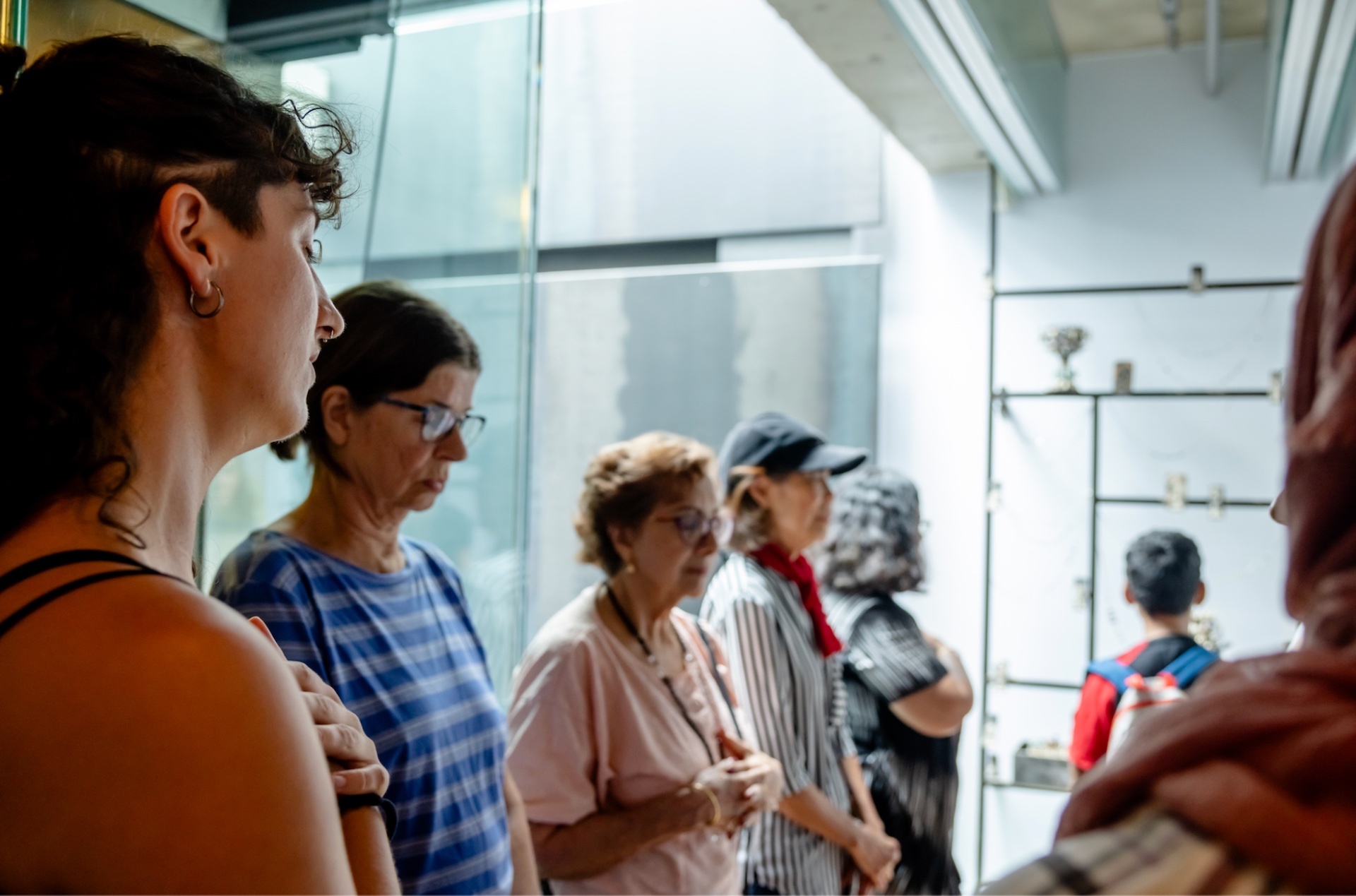
We now head to the 4th floor of the Foundation, and pause in front of artist Shanie Tomassini’s installation Lueurs d’écran sous un ciel sans lune (2023). We put aside observation as the only way to interact, and proceed to a short meditation session, resonating with the spiritual character of the work. Cara also invites us to vocalize the sound “om” or any other of our choice. The “om” has the benefit of making not only our vocal cords vibrate, but also our ribcage and the inside of our entire body. Through our resonant, unifying “om,” we put down roots and expand together into the space. Participants then give themselves permission to fill the space and express themselves through gestures or introspective moments. They describe this moment as both liberating and unifying.
Also, recalling the experience of the work Lueurs d’écrans, Cara reflects on the relationship between verbal and bodily conversation. She tells us, “we had some more political conversations around our relationship to cell phones. Then, to connect to the very simple vibrations of the body allowed the ashes to settle, and after a charged conversation, we realigned ourselves with our bodies and the alcove space.”
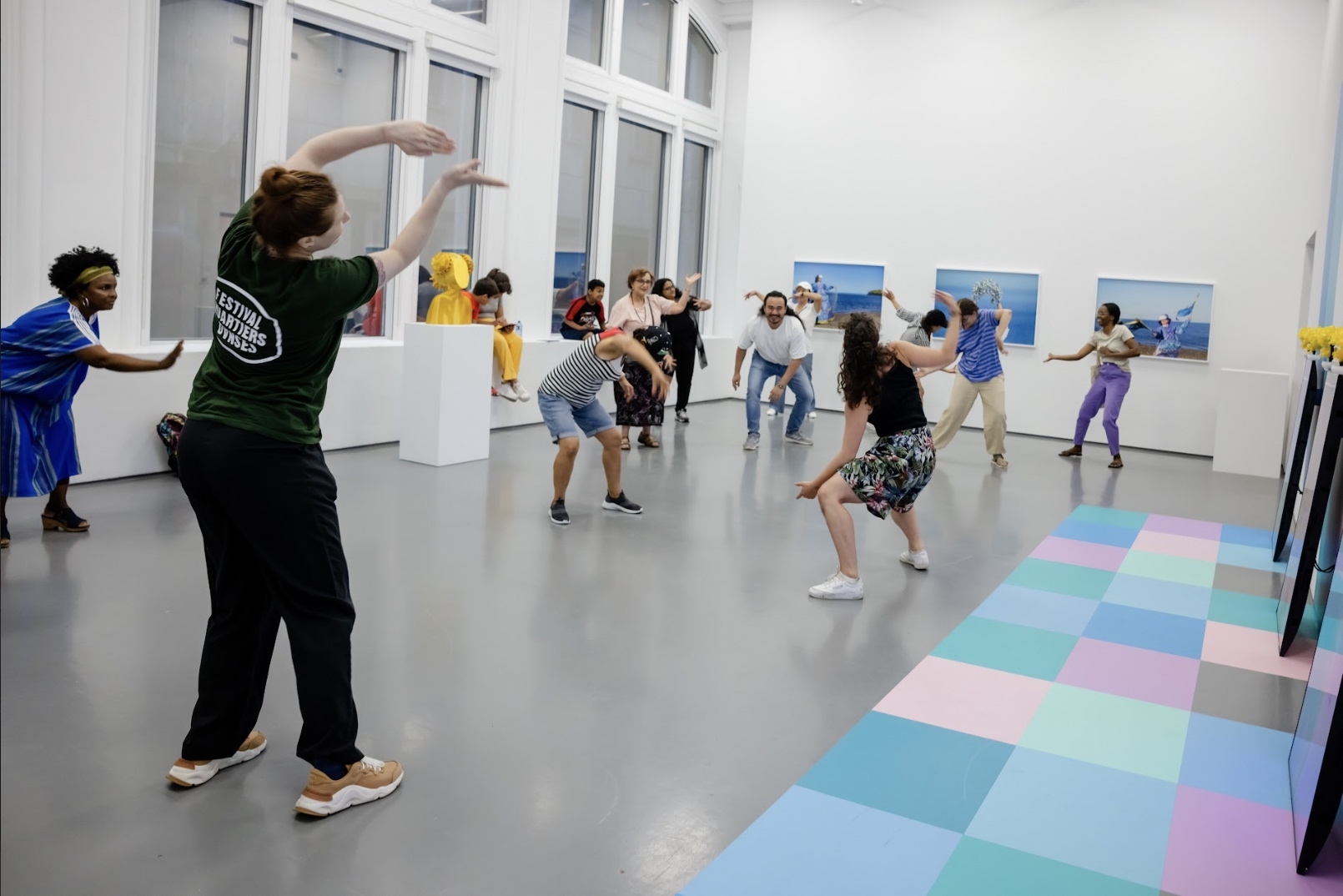
Continuing our journey towards the Foundation’s second building, located at 465 Saint-Jean Street, we are captivated by Chun Hua Catherine Dong’s artwork, in which digital space becomes a place for play and the reconfiguration of identity. Meet Me Half Way (2021) is an introspective piece which offers a space for free, flowing exploration within a semi-abstract digital environment inspired by the artist’s childhood memories. Guided by Cara’s suggestions, we embark on a choral round inspired by the movements of water, roller-coasters and shimmering light.
In conclusion, in talking with the participants, we were delighted to note a sense of well-being that seemed to have carved out a place for itself in everyone’s imaginations and bodies, despite the unpredictability that the group had to deal with throughout the visit.
Guided dance visits offer a different kind of intimate relationship with the artworks than that of traditional guided tours. Readings and interpretations of the work through the body allow participants to internalize their experience of the art object. Visitors quickly come to trust their bodies inside the space. Through play, many said they were able to reconnect with their inner child. Cara notes that the body also has the power to interpret art, and we couldn't agree more.
Our takeaway from this exchange around dance and sharing is a powerful sense of freedom. Dance visits offer an alternative to traditional guided tours. They create a setting where participants adopt an active rather than passive approach within the gallery spaces. This process encourages a more personal interpretation of the works of art. A sense of ease arises naturally from movement and collaboration, allowing everyone to contribute in a light-hearted way to an experience of appreciation, discussion and sharing.
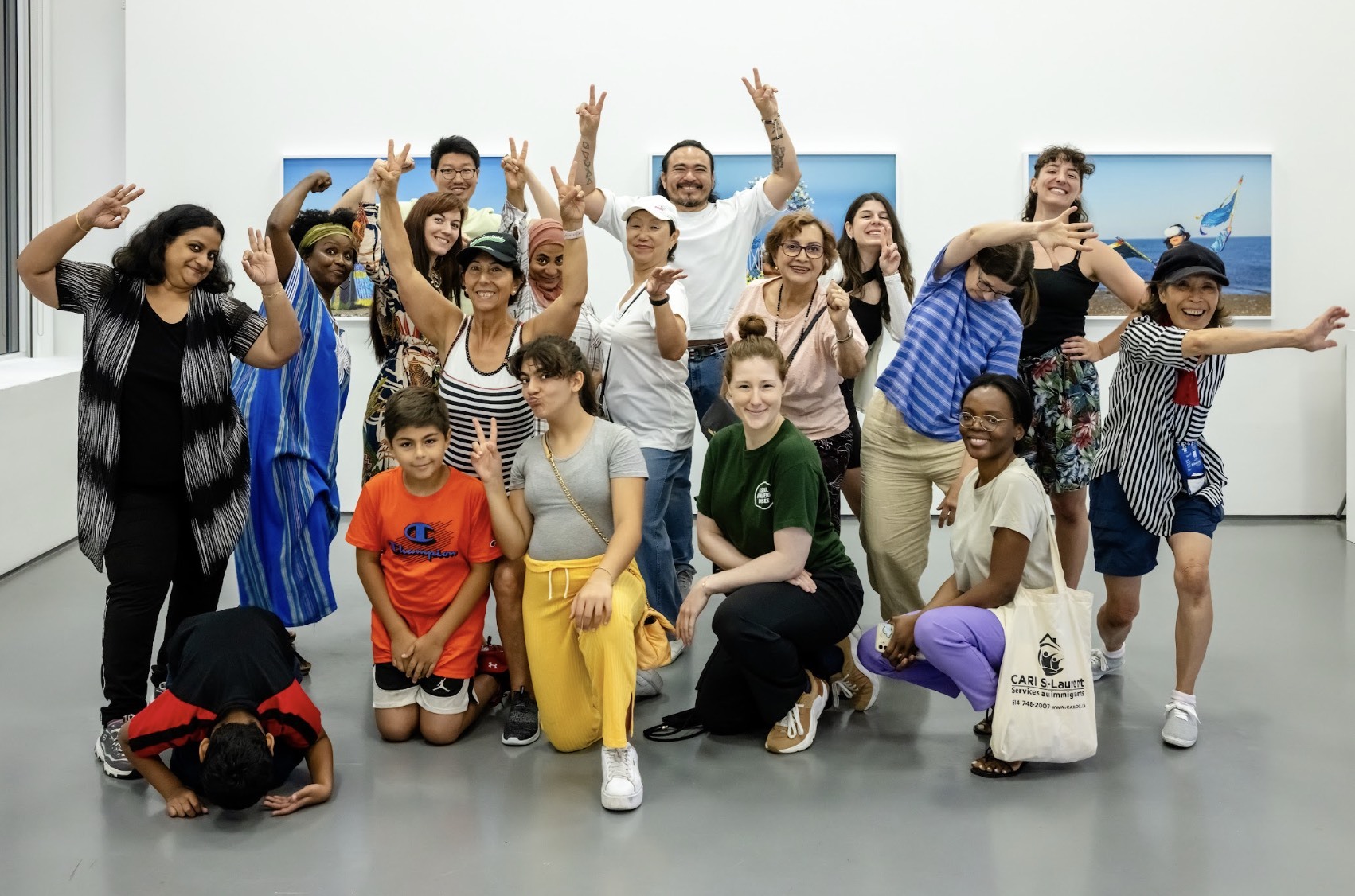
[1] Claire Bishop (2013). Radical Museology, or, What’s ‘Contemporary’ in Museums of Contemporary Art? Koenig Books, London, p. 5.
https://monoskop.org/images...
Authors
Marie-Hélène Lemaire
Marie-Hélène Lemaire is Head of Education at the PHI Foundation for Contemporary Art. She holds an M.A. in Museum Studies at UQÀM (Université du Québec à Montréal), as well as a Ph.D. in Communications Studies at Concordia University that focuses on developing a movement-based pedagogy for guided group visits in contemporary art exhibitions. Using a feminist pedagogy of embodiment, new materialist and poetic inquiry approaches, she aims to privilege and validate somatic, sensorial, haptic and affective engagements with contemporary art. She also nurtures a poetic writing practice for developing, facilitating, and interpreting the education program at the PHI Foundation, as well as to express her own personal aesthetic engagements. She has published in The Journal of Museum Education (2021), the Canadian Review of Art Education (2021), and Muséologies (2018). She is author of a chapter in the forthcoming book Art Education in Canadian Museums: Practices in Action (Intellect, July 2024).
Marilou Lyonnais Archambault
Marilou Lyonnais Archambault is a multidisciplinary artist and educator with a bachelor's degree in visual and media arts education from UQAM, and is currently completing an MFA in Intermedia at Concordia University. Her artistic practice offers reflective work on subjects such as memory, the digital condition, the living, and liminal spaces. Her approach brings together sound, music, installation, still and moving images.
A musician with the duo Saudade, she has given several performances on boreal soil and, for over half a decade, has hosted a radio show (n10.as) based on a blend of abstract rhythms, nostalgic dance music and hazy atmospheres. She is a frequent DJ at various city events.
The artist has performed at festivals such as Suoni Per il Popolo, MUTEK, FIMAV, Piknic Electronik, Sight & Sound, and exhibited at Montréal cultural institutions; PHI Centre, Eastern Bloc, Never Apart. Her work has been supported by the Canada Council for the Arts.
Kim Johnson
Kim Johnson is an educator at the PHI Foundation. She completed a BA in Art Education at Concordia University in 2016. Kim is involved in the democratization of visual art through her educational and artistic projects in various community centres and cultural institutions in Montréal. As a visual artist, she draws her inspiration from human connections, the feminine and nature.

Free
Foundation
Terms of Use brings together works that explore the impact of technologies on the definition, construction, and (re)framing of individual and collective selves

Free
Foundation
Terms of Use brings together works that explore the impact of technologies on the definition, construction, and (re)framing of individual and collective selves
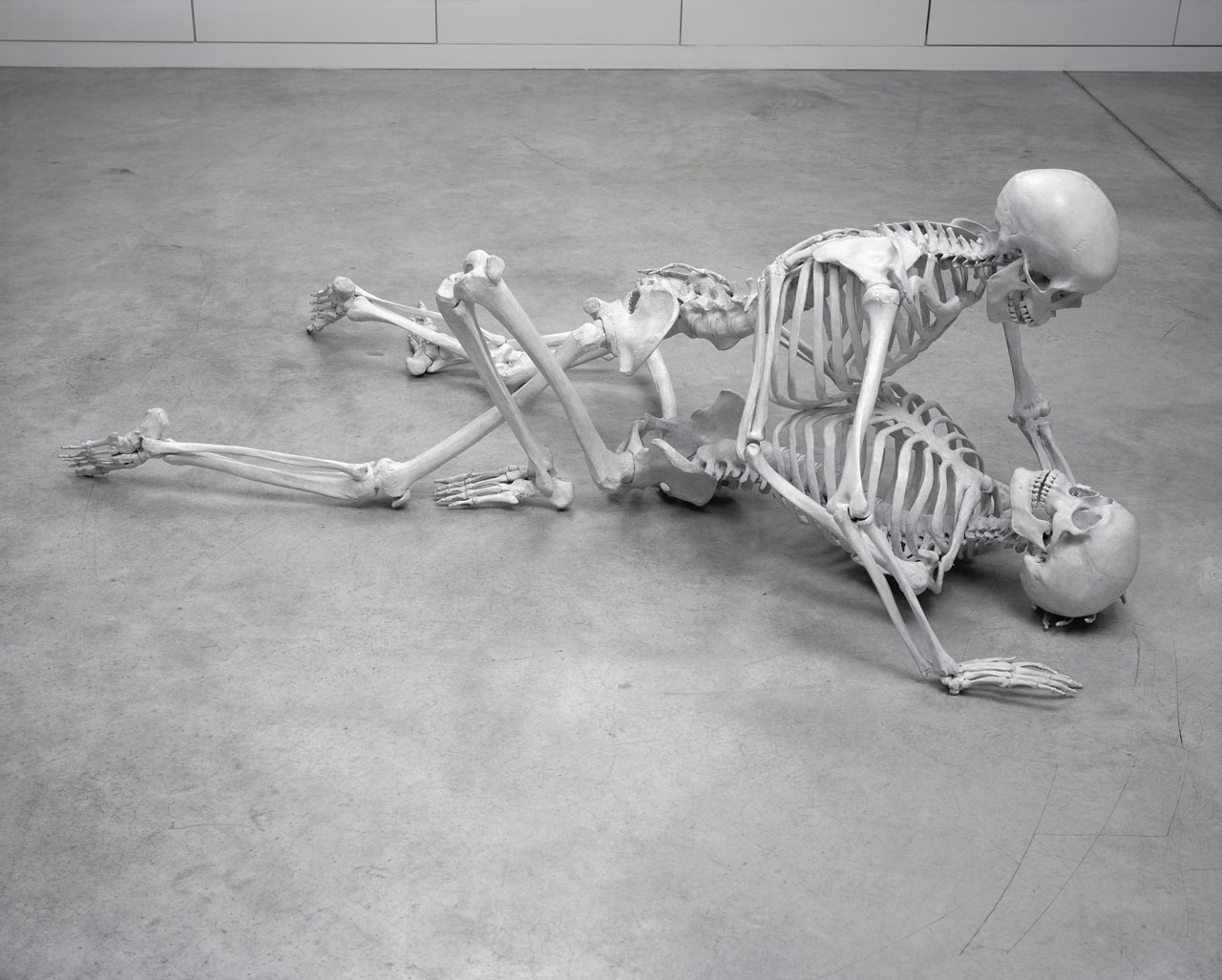
Foundation
Gathering over forty recent works, DHC/ART’s inaugural exhibition by conceptual artist Marc Quinn is the largest ever mounted in North America and the artist’s first solo show in Canada
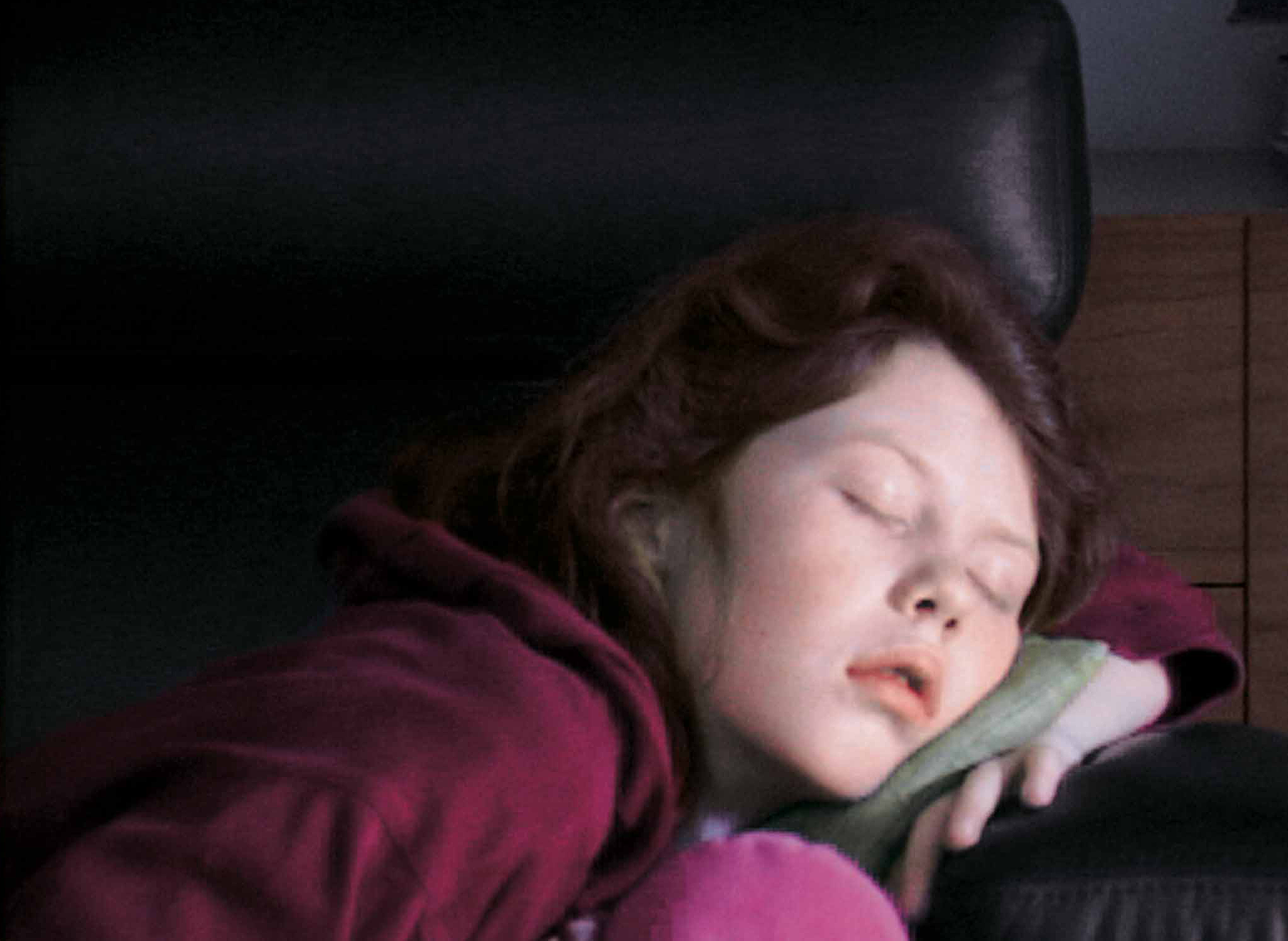
Foundation
Six artists present works that in some way critically re-stage films, media spectacles, popular culture and, in one case, private moments of daily life
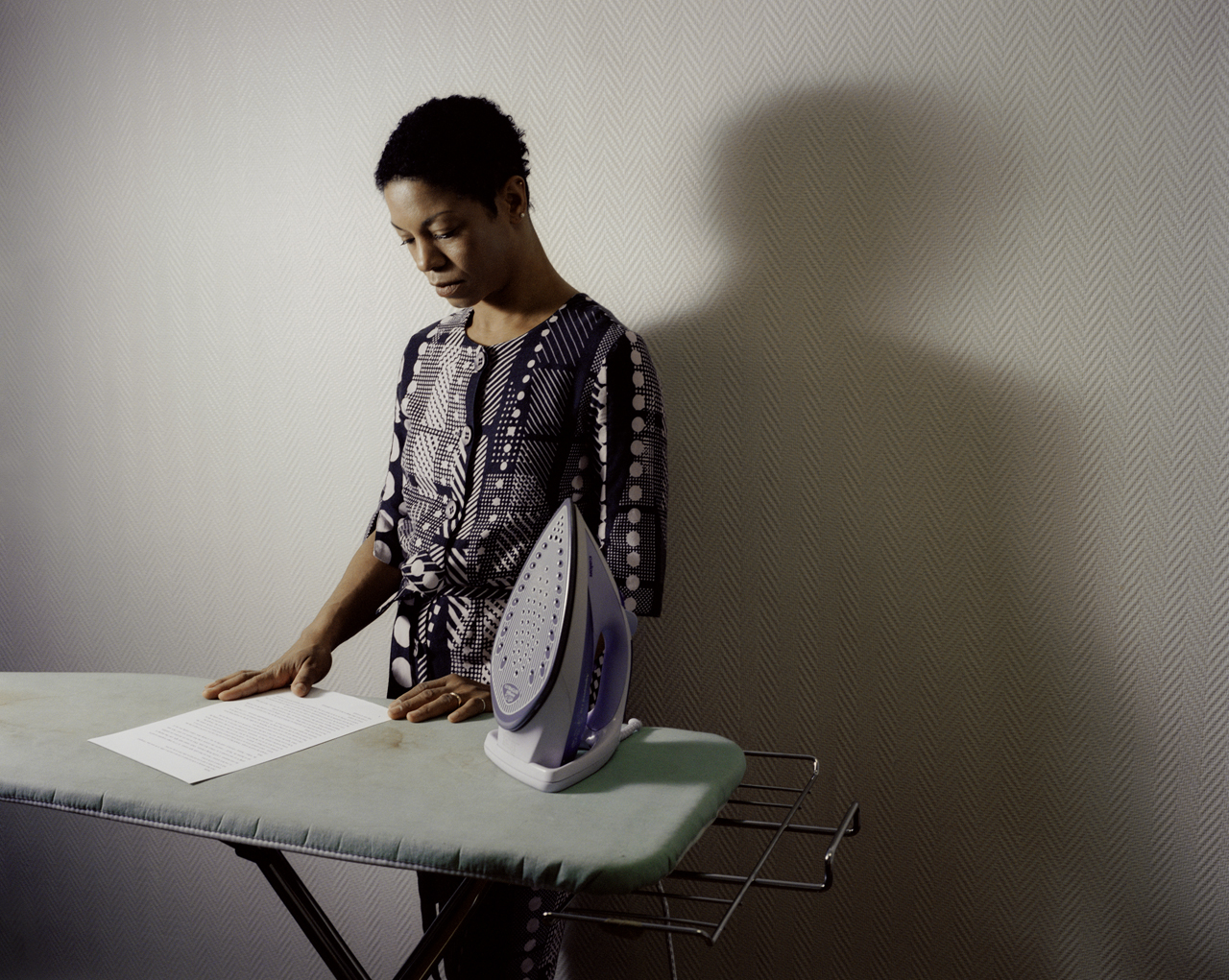
Foundation
This poetic and often touching project speaks to us all about our relation to the loved one
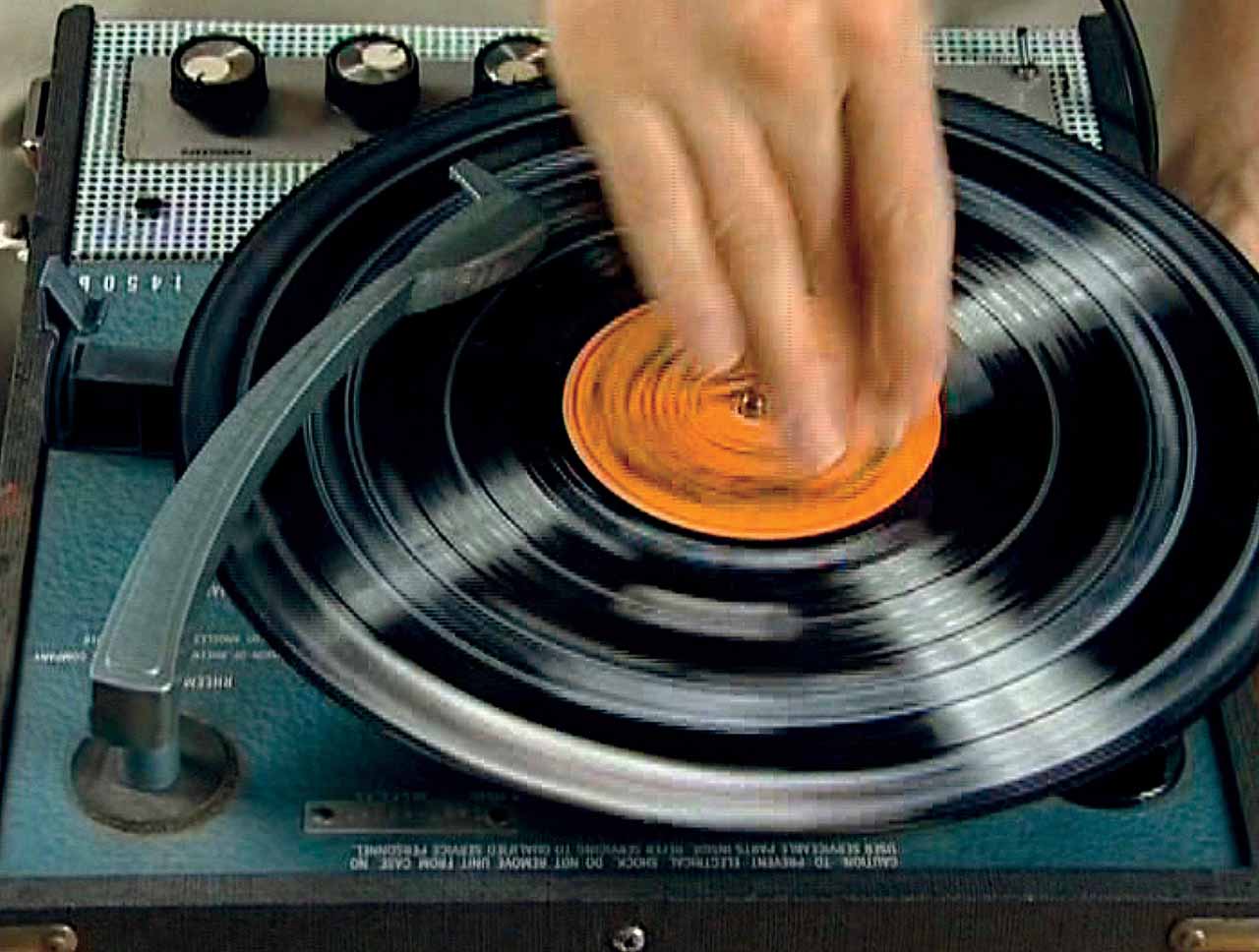
Foundation
DHC/ART Foundation for Contemporary Art is pleased to present the North American premiere of Christian Marclay’s Replay, a major exhibition gathering works in video by the internationally acclaimed artist
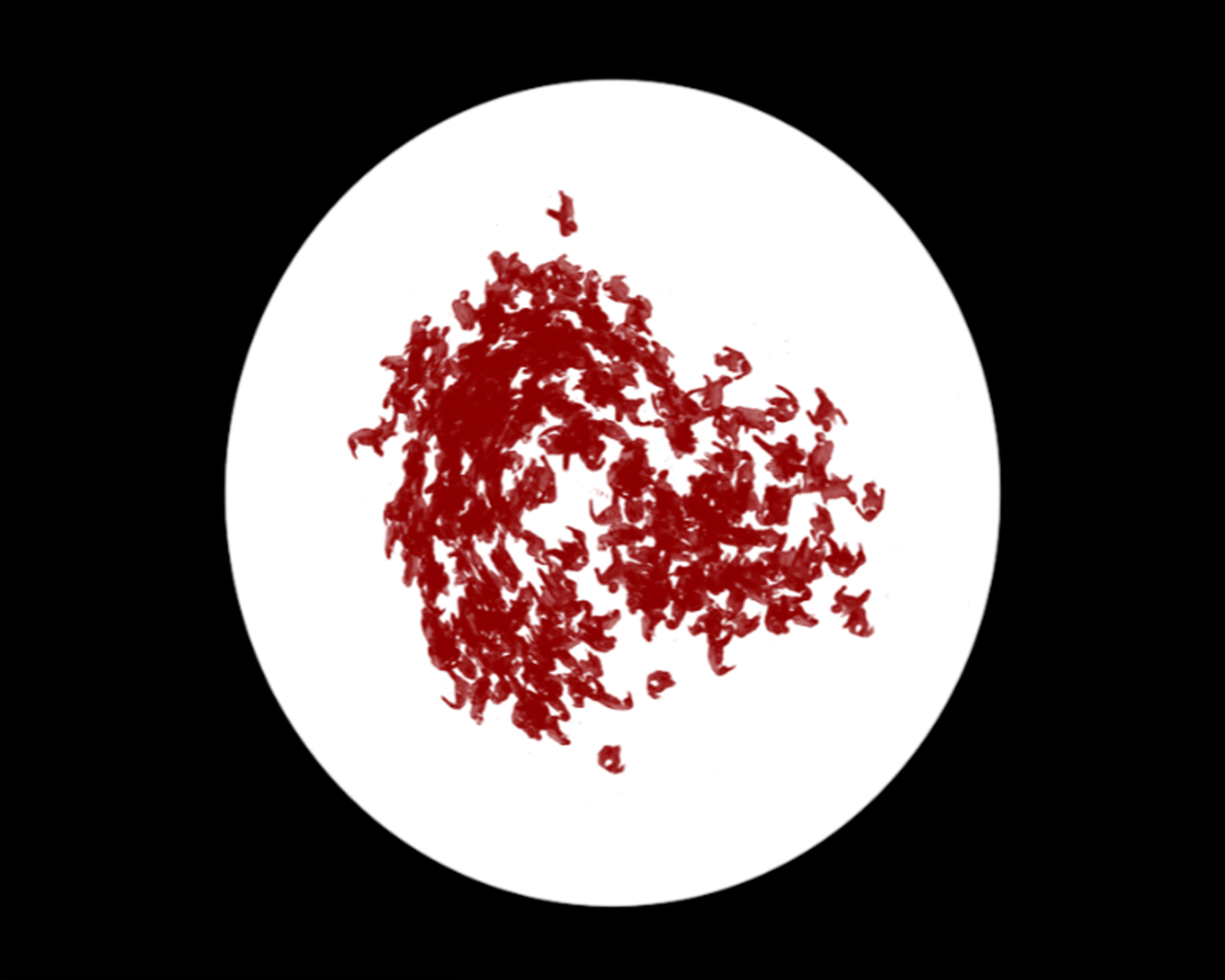
Foundation
DHC/ART is pleased to present Particles of Reality, the first solo exhibition in Canada of the celebrated Israeli artist Michal Rovner, who divides her time between New York City and a farm in Israel
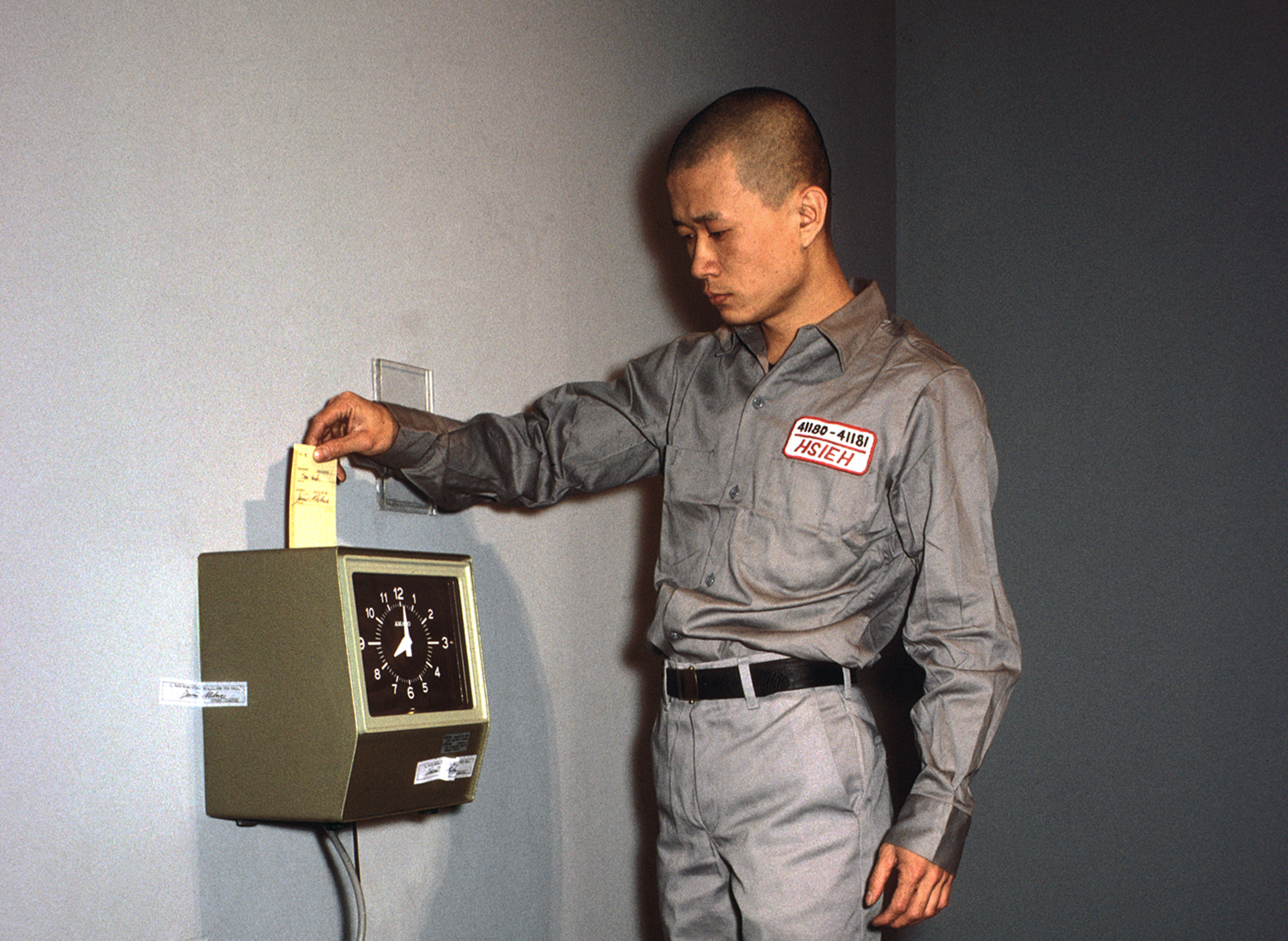
Foundation
The inaugural DHC Session exhibition, Living Time, brings together selected documentation of renowned Taiwanese-American performance artist Tehching Hsieh’s One Year Performances and the films of young Dutch artist, Guido van der Werve
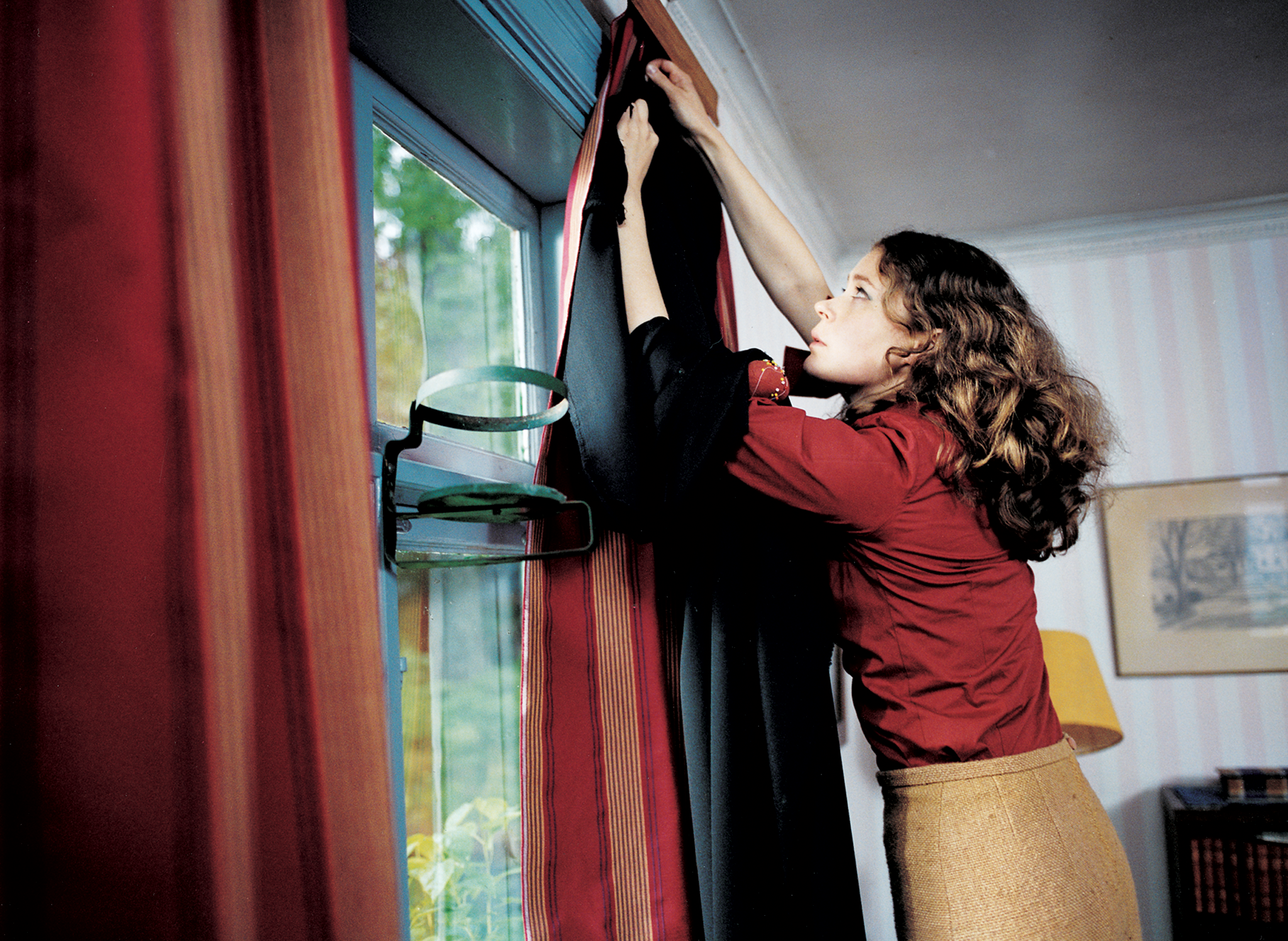
Foundation
Eija-Liisa Ahtila’s film installations experiment with narrative storytelling, creating extraordinary tales out of ordinary human experiences
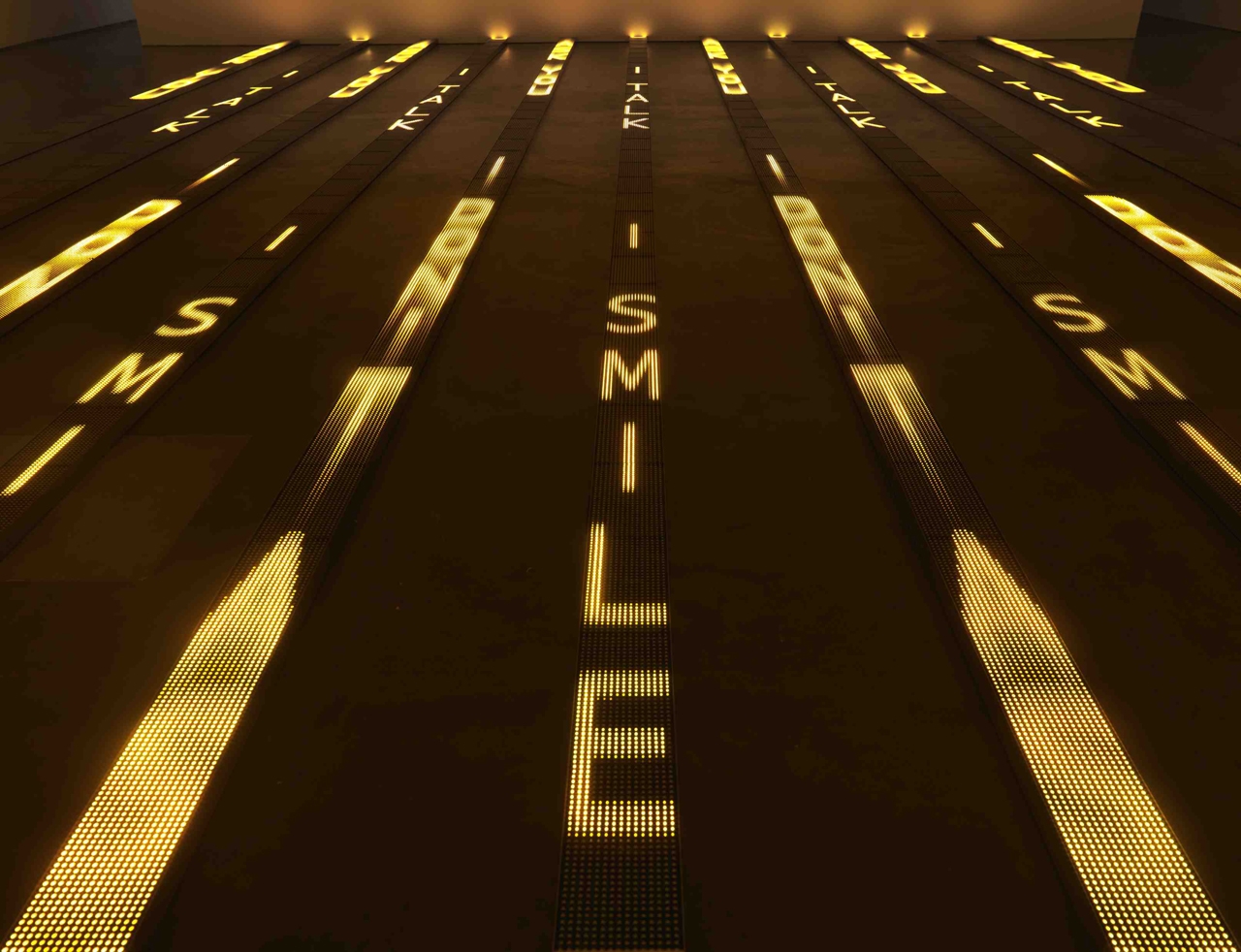
Foundation
For more than thirty years, Jenny Holzer’s work has paired text and installation to examine personal and social realities